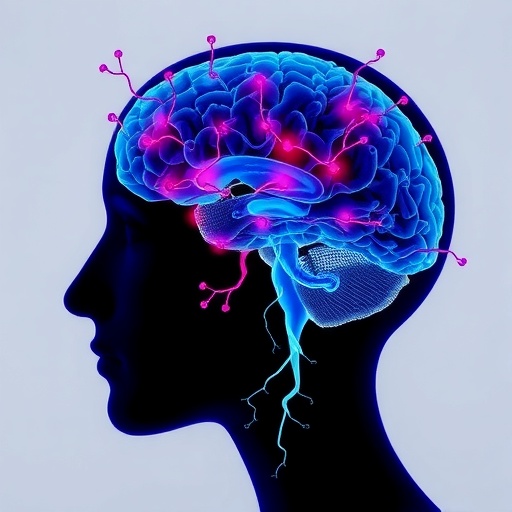In recent advancements in biomedical research, a groundbreaking letter to the editor has surfaced in J Transl Med authored by J. Lou, highlighting the promising effects of adeno-associated virus (AAV) mediated expression of STC-1 in the context of degenerative retinopathy. This condition, known for causing progressive vision loss due to retinal cell degeneration, poses a significant challenge not just for the patients affected but also for the medical community grappling with effective therapeutic strategies. Lou’s communication underscores a vital intersection of gene therapy and vision restoration, offering a beacon of hope in the field of ocular medicine.
The mechanism of action described by Lou involves the utilization of AAV vectors, which are recognized for their ability to deliver genetic material into host cells efficiently. By employing these vectors to increase the expression of STC-1, a secreted glycoprotein with known neuroprotective properties, researchers are embarking on a novel therapeutic pathway. The increased production of STC-1 is theorized to dampen neuroinflammatory responses within the retina, a key contributor to the progression of degenerative retinopathy. This suppression of inflammation could be pivotal in preserving both retinal structure and function, potentially reversing or halting the damage caused by the disease.
To understand the significance of this research, it is essential to delve into the complexities of neuroinflammation and its role in ocular health. Degenerative retinopathy is often characterized by the activation of microglia and Müller glial cells, leading to a cascade of inflammatory signals that further exacerbate neuronal damage. By harnessing the power of STC-1, the goal is to inhibit these inflammatory pathways, thereby creating an environment conducive to retinal cell survival. The implications of this approach extend beyond mere visual preservation; they suggest a comprehensive strategy to foster retinal repair and regeneration.
Lou’s correspondence does not merely present an isolated finding; rather, it ignites a broader conversation about the potential applications of gene therapy in treating various ocular diseases. The concept of using AAV as a delivery mechanism is not new, but its application in the context of STC-1 expression emphasizes a targeted approach that could set a precedent for future studies. This technique highlights the versatility of AAV vectors in dealing with complex conditions that, until now, have posed insurmountable challenges in therapeutic intervention.
Furthermore, the findings allude to a fascinating synergy between genetic engineering and ocular pharmacology. As the scientific community zeroes in on the molecular underpinnings of diseases, integrating gene delivery systems with therapeutic proteins like STC-1 may redefine treatment paradigms. This paradigm shift is not solely theoretical; preliminary results provided by Lou suggest tangible clinical benefits, which, if substantiated in future studies, could lead to a new class of therapies specifically designed for degenerative retinal conditions.
It is also important to consider the safety and efficacy of such treatment modalities. The journey from the laboratory bench to the clinic requires extensive validation to ensure that the benefits of AAV-mediated STC-1 expression outweigh any potential risks. Previous studies involving AAV have demonstrated a favorable safety profile, yet the addition of neuroprotective factors amplifies the urgency for clinical trials to rigorously assess this innovative approach. The potential for STC-1 to modulate the retinal healing process invites further inquiry into dosing parameters, delivery methods, and long-term patient outcomes.
To contextualize this research within the ongoing discourse on vision restoration, it is essential to reference the larger landscape of retinal therapeutics. With various existing treatments such as anti-VEGF therapies and retinal implants, there is a persistent demand for innovative solutions. Lou’s research brings to light a possibility that traditional modalities alone may not sufficiently address the neurodegenerative aspects accompanying retinopathy. The ability to target inflammation while supporting cellular integrity presents an enticing avenue for exploration.
As excitement builds among researchers, clinicians, and patients alike, the findings brought forth by Lou represent a significant step towards understanding how to reclaim vision lost to degenerative diseases. The integration of gene therapy using AAV vectors alongside neuroprotective agents exemplifies a proactive approach to combating retinal degeneration. It may not only lead to improved visual outcomes but also inspire a new wave of research in regenerative medicine that targets multifaceted aspects of ocular diseases.
Ultimately, the implications of Lou’s letter extend beyond the immediate findings. It serves as a clarion call for the need to expand gene therapy applications across a multitude of conditions. By synergizing genetic interventions with established therapeutic targets, the research community can open doors to previously unimaginable treatments that could alter the trajectory of degenerative eye diseases.
The future of ocular medicine looks promising as researchers work diligently to transform these insights into clinical realities. With dedicated efforts and enhanced collaboration across disciplines, the dream of halting vision loss due to degenerative retinopathies may soon materialize, offering hope and improved quality of life for countless individuals affected by these relentless conditions.
As this field of research progresses, it will be crucial to maintain a balance between innovation and caution. While the potential benefits of AAV-mediated STC-1 expression in retinopathy are enormous, comprehensive studies will be imperative in establishing safety and efficacy benchmarks. The scientific community’s commitment to rigorously testing these hypotheses will ultimately determine whether we can translate this research into effective clinical therapies.
In summary, this letter by J. Lou is a crucial contribution to ongoing research related to degenerative retinopathy. It not only opens up a new avenue for drug development but also sets the stage for future studies aimed at further dissecting the roles of neuroinflammatory mediators in retinal health and disease. The potential of AAV-mediated gene therapies represents a paradigm shift that could redefine treatment strategies for ocular degenerative conditions, making this an exciting era for ophthalmology.
Subject of Research: Gene therapy targeting neuroinflammation in degenerative retinopathy.
Article Title: Letter to editor: AAV-mediated STC-1 expression mitigates neuroinflammation and preserves visual function in degenerative retinopathy.
Article References:
Lou, J. Letter to editor: AAV-mediated STC-1 expression mitigates neuroinflammation and preserves visual function in degenerative retinopathy. J Transl Med 23, 1275 (2025). https://doi.org/10.1186/s12967-025-07125-7
Image Credits: AI Generated
DOI: https://doi.org/10.1186/s12967-025-07125-7
Keywords: Gene therapy, AAV, STC-1, neuroinflammation, degenerative retinopathy, visual preservation, ocular medicine, therapeutic strategies, regenerative medicine.
Tags: AAV gene therapy for vision restorationadeno-associated virus vectorsbiomedical research breakthroughsdegenerative retinopathy treatmentgene therapy in ophthalmologyneuroinflammation reduction in retinopathyneuroprotective properties of STC-1ocular medicine advancementsretinal cell degeneration solutionsSTC-1 therapeutic effectstherapeutic pathways in eye diseasesvision loss prevention strategies





